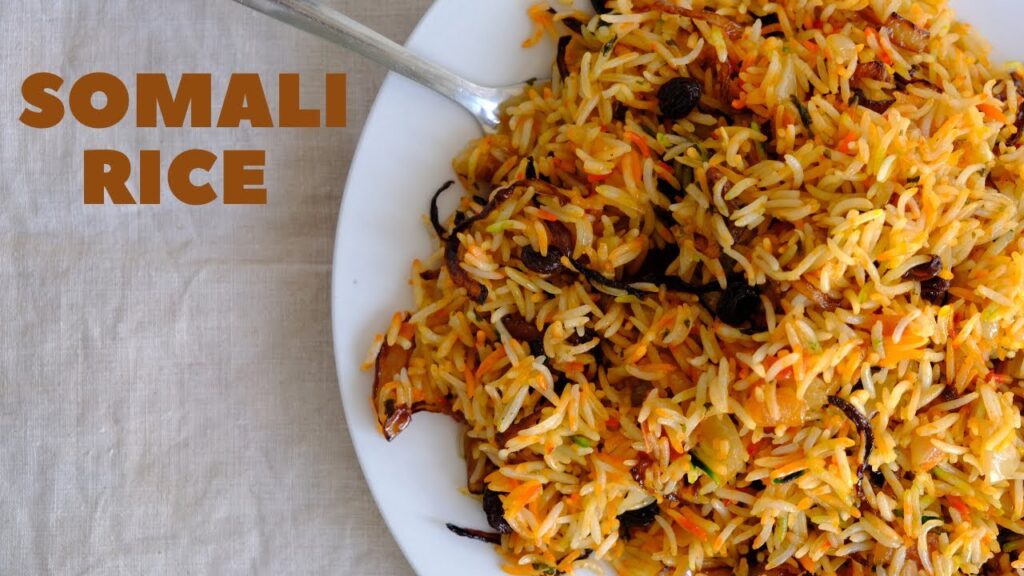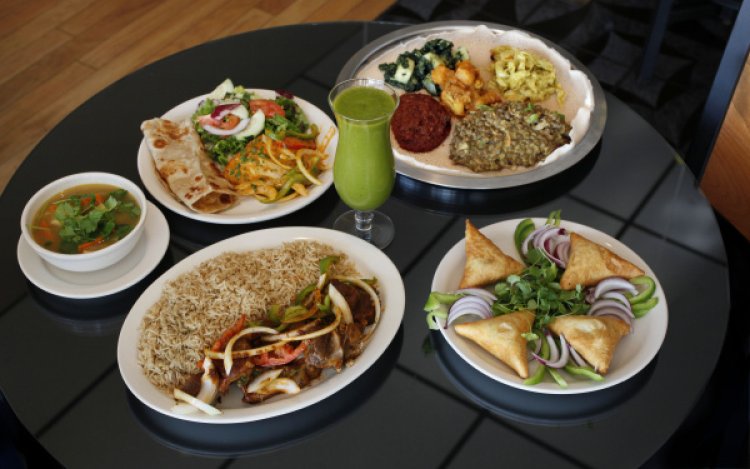Discover the Rich Flavors of Authentic Somali Food: A Culinary Journey
Wiki Article
Discovering the Rich Tastes and Social Customs of Genuine Somali Cuisine: A Comprehensive Guide to Somali Food
In "Checking Out the Rich Flavors and Social Traditions of Genuine Somali Cuisine: A Comprehensive Guide to Somali Food," you will certainly get started on a trip to find the dynamic flavors and cultural heritage of Somali cuisine. You will certainly additionally discover about the different impacts that have actually formed Somali food and the substantial duty that food plays in Somali society.The Origins of Somali Cuisine
Among the vital facets of recognizing Somali food is delving into the rich background and origins of this tasty culinary practice. Somali cuisine is a representation of the country's varied social impacts, including Arab, Persian, Indian, and African. The beginnings of Somali cuisine can be mapped back to old times when Somali individuals relied on a nomadic way of living and the abundance of natural deposits in the area.
This has actually significantly affected the ingredients and food preparation strategies made use of in Somali food. Staples such as rice, pasta, and bread are likewise famous in Somali food, mirroring the impact of Arab and Indian culinary practices.
Moreover, Somali food is understood for its emphasis on fresh and locally sourced ingredients. Fruits, vegetables, and meat are often sourced from regional markets and ranches, making sure that the recipes are tasty and genuine. Fish and shellfish, including fish and lobster, is likewise a staple in Somali food because of the nation's lengthy coast.
Key Ingredients in Somali Food Preparation
To truly comprehend and value the genuine tastes of Somali cuisine, it is crucial to familiarize yourself with the crucial active ingredients that play a main function in Somali food preparation. Somali cuisine is known for its fragrant and dynamic tastes, which are attained with the use of a selection of seasonings and active ingredients.Another key ingredient in Somali cooking is hilib ari, which is a sort of marinated goat meat. The meat is seasoned in a mixture of yogurt, spices, and natural herbs, which assists to tenderize and flavor the meat. Hilib ari is a preferred meal in Somali cuisine and is usually offered with rice or injera, a kind of flatbread.
Ghee, or subag, is a kind of cleared up butter that is extensively utilized in Somali cuisine for cooking and flavor. Dates and bananas are commonly made use of in Somali desserts and treats, adding an all-natural sweetness to the recipes.
Typical Somali Meals
Check out the mouthwatering tastes and social heritage of authentic Somali food by diving into the world of typical Somali recipes. Somali food is known for its varied variety of dishes, each with its own distinct flavors and ingredients. One popular standard recipe is "baasto," a delicious pasta dish made with macaroni or pastas cooked in a rich tomato-based sauce instilled with aromatic seasonings such as cumin and coriander. One more precious dish is "suqaar," which contains tender pieces of meat, normally beef or goat, cooked with onions, garlic, and a mix of seasonings. The meat is then offered with great smelling rice or flatbread, developing a enjoyable and tasty meal. For fish and shellfish lovers, "maraq qumbe" is a must-try recipe made with delicious shrimp cooked in a tasty brew made from coconut milk, tomatoes, and a collection of spices. To complete your cooking journey, indulge in a dessert like "xalwo" or Somali-style jelly candies made with sugar, water, and seasoned with rosewater or cardamom. Typical Somali dishes are a real representation of the nation's abundant social heritage and will leave you yearning for extra.Influences on Somali Food

One of the major influences on Somali food comes from the Arab world. Arab traders presented seasonings such as cinnamon, cardamom, and cloves, which are currently necessary in Somali meals. Making use of days, figs, and honey in lots of Somali treats additionally mirrors the Arab impact.

Indian investors brought with them a selection of flavors, such as coriander, turmeric, and cumin, which are extensively utilized in Somali cooking. Somali dishes like Suugo Suqaar and Maraq incorporate these Indian seasonings, adding depth and intricacy to the tastes.
The Turkish impact on Somali food can be seen in using yogurt and kebabs. Yogurt is frequently made use of as a condiment or sauce, while smoked meat skewers are a popular road food in Somalia.
Italian colonization also left its mark on Somali food. Italian pasta recipes like lasagna and spaghetti are now commonly eaten in Somalia, typically with a Somali twist, incorporating regional active ingredients and tastes.
The Role of Food in Somali Culture
Food plays a substantial role in Somali culture hop over to these guys as it serves as a method of connection, party, and conservation of traditions. In Somali houses, food preparation and sharing dishes together are thought about essential tasks that bring households and neighborhoods better.Food additionally plays a crucial function in commemorating Somali culture and customs. Vacations and celebrations are marked by the prep work and consumption of standard Somali meals. For instance, during Eid al-Fitr, an event that marks completion of Ramadan, families integrated to appreciate a banquet that consists of sambusas (fried breads filled up with meat or vegetables), maraq (a passionate stew), and bariis iskukaris (spiced rice) These festive meals not only satisfy cravings however also offer as a means to honor and pass down social heritage to more youthful generations.
Furthermore, food acts as a means of preserving Somali traditions. Conventional recipes and cooking methods more are passed down from generation to generation, making sure that the flavors and culinary methods of Somali food are valued and preserved. By preparing and sharing standard meals, Somali individuals have the ability to maintain their social identification to life and produce a feeling of belonging within their communities.
Conclusion
From the origins of Somali cuisine to the vital components used in Somali cooking, and from read what he said traditional Somali recipes to the influences on Somali food, we have actually explored it all. Next time you have the possibility, don't think twice to attempt some genuine Somali dishes and immerse yourself in this scrumptious and diverse food.In "Checking Out the Abundant Flavors and Social Practices of Authentic Somali Food: A Comprehensive Overview to Somali Food," you will begin on a journey to discover the dynamic flavors and cultural heritage of Somali food. The beginnings of Somali food can be mapped back to old times when Somali people relied on a nomadic way of living and the wealth of all-natural resources in the region.
To genuinely comprehend and appreciate the authentic tastes of Somali cuisine, it is vital to acquaint yourself with the essential active ingredients that play a main function in Somali cooking.Check out the mouthwatering tastes and cultural heritage of genuine Somali cuisine by delving into the globe of traditional Somali meals. From the origins of Somali cuisine to the key ingredients utilized in Somali food preparation, and from standard Somali dishes to the influences on Somali food, we have discovered it all.
Report this wiki page